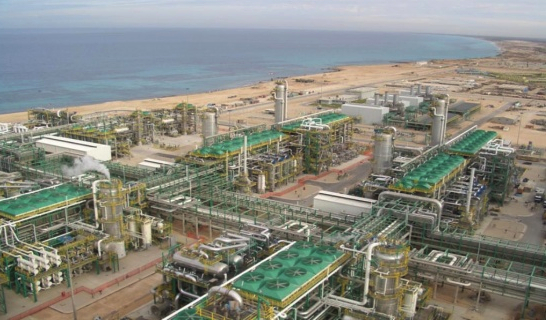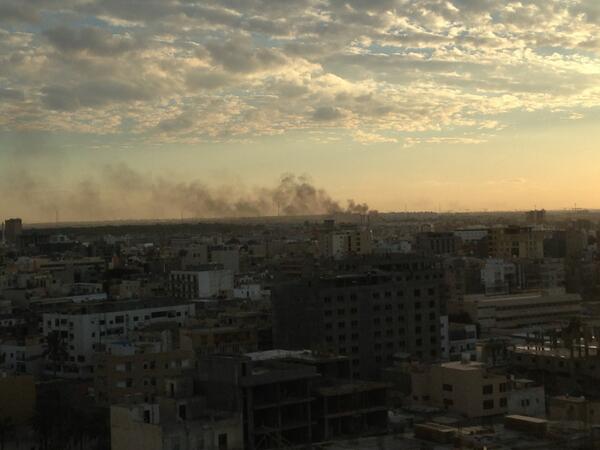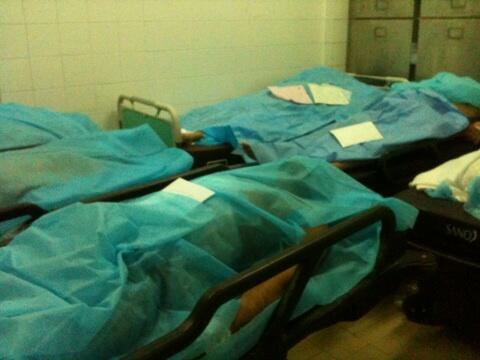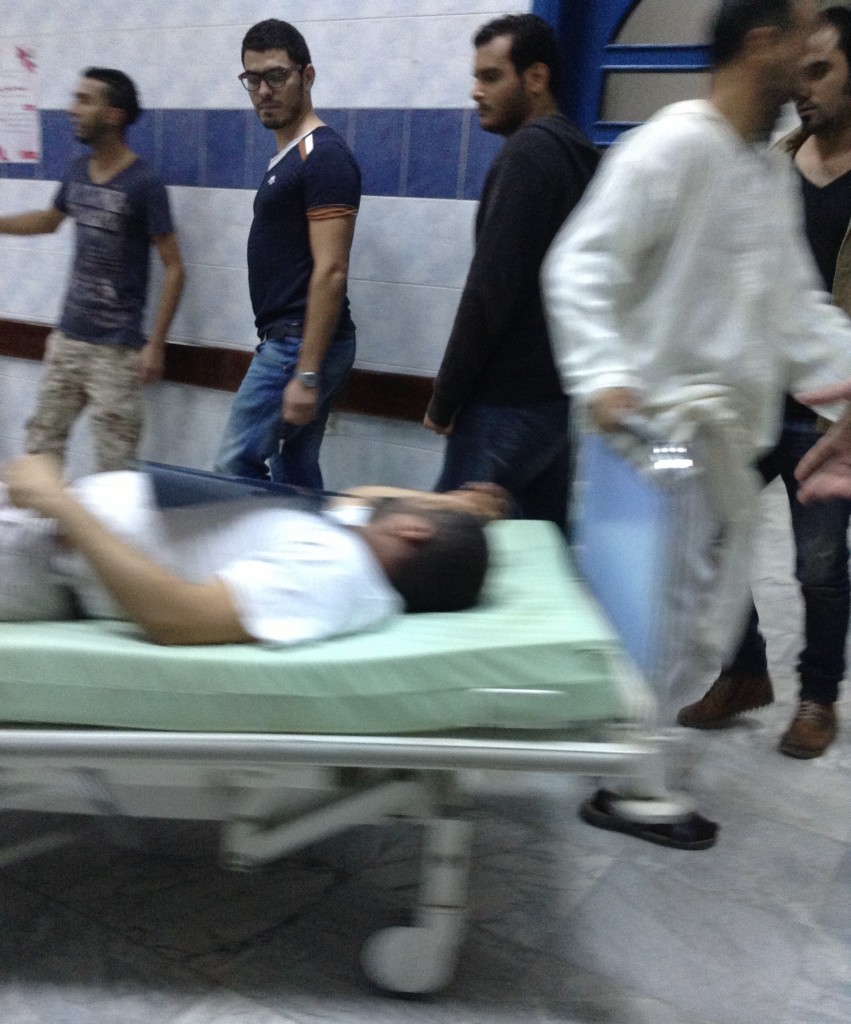State of Emergency in Libyan Capital as More Militia Clashes Break Out
Posted on 11/17/2013 by Juan Cole
Libyan Prime Minister Ali Zeidan declared a 48-hour state of emergency in the capital of Tripoli on Saturday as fresh fighting broke out at Tajoura to the east of the capital. On Friday, unarmed civilian protesters had been attacked with heavy military weapons by Misrata militiamen, leaving 43 dead and some 500 wounded.
At Tajoura, known as the gateway of Tripoli, one protester was killed and dozens were injured on Saturday.
The local city council of Tripoli called for a general strike in both the public and private sectors for 3 days in mourning over the victims of the militia. Non-essential shops and services will close. Already on Saturday many shops were closed and the place looked like a ghost town. Clinics, pharmacies, bakeries and gas stations are exempted from the strike.
The Misrata militia, responsible for Friday’s violence, had lost control of its HQ in Tripoli. But reinforcements slipped in from Misrata Friday night and early Saturday morning, allowing it to reclaim the HQ. Prime Minister Zeidan has called for all non-Tripoli militias to depart by Monday. Misrata was besieged by Muammar Gaddafi’s tanks and artillery for 6 months in 2011, losing many civilian non-combatants to these brutal tactics. Many Libyans on my Twitter feed are asking how the militia could itself now turn heavy weapons on civilians.
Misrata is a vast arms depot, with tanks, rocket propelled grenades and other arms stockpiled in such numbers as to dwarf the armaments of the central government. Much of the equipment was conquered from Gaddafi’s forces, but some was sent during the fighting of 2011 by Qatar.
PM Zeidan said Saturday that Libya is at a crossroads. It seems likely that the transitional government will either lose its nerve or assert itself in the coming week; which it does will be consequential for the future of the country.
France, other NATO countries, and even the US are offering to train Libyan troops and security forces, but so far few such personnel have received practical training abroad.
Libya's spy chief kidnapped
The kidnapping occurs just days after clashes between rival militias and protesters killed at least 45 people in Tripoli
- Topics:
- Libya
- International

Libya's deputy intelligence chief was kidnapped outside the Tripoli airport on Sunday, two security sources said, days after clashes between rival militias and protesters in the capital killed at least 45 people.
Mustafa Noah, the head of agency's espionage unit, was pulled into a vehicle in a parking garage, the security sources said.
The kidnapping comes at a time of increasing unrest in Libya. The government is struggling to keep order as rival militias and hard-line Islamists refuse to disarm two years after they helped oust Muammar Gaddafi in a NATO-backed uprising.
No group claimed responsibility for the abduction, but militias have snatched officials in the past to get political leverage.
Prime Minister Ali Zeidan was abducted by a government-payrolled militia group last month, but freed unharmed after a few hours.
Tripoli city leaders on Sunday called for street protests and strikes at shops, schools and universities to press Libya's government to drive out militiamen blamed for the clashes.
Violence broke out on Friday when militiamen from the coastal city of Misrata opened fire on protesters marching on their brigade quarters in Tripoli to demand they leave the capital.
Dozens of people were killed in the fighting that followed — the deadliest street violence in Tripoli since Gaddafi's fall.
Misrata gunmen and rival militias clashed again on Saturday to the east of the capital, killing one more.
The clashes prompted Libyan officials to declare a 48-hour state of emergency in Tripoli.
Amazigh shocked by Tripoli slaughter lift Mellitah blockade
By Ahmed Elumami.

Tripoli, 16 November 2013:
Saying they are shocked by the killings in Tripoli, Amazigh protestors which have been blockading the Mellitah complex, stopping supplies of gas to Italy, today suspended their action.
The Amazigh Supreme Council said they had taken the move “on the back of the unfortunate events that took place on Friday in Tripoli”.
A member of the council, Ayoub Sufian, told the Libya Herald that the decision to suspend the Mellitah blockade was because of “the bloody clashes that caused so much death and terror”.
However the Council stressed in a statement that the Amazigh community has not given up its insistence that Article 30 of the Constitutional Declaration be amended to give greater representation to minorities. Sufian said that the resumption of the blockade would depend on the decisions that will be made by the GNC.
The Mellitah complex was closed last month by gunmen and members of the Amazigh community from Zuwarah. Amazigh leaders said eight days ago that they allow the complex to restart as a goodwill gesture ahead of the GNC’s expected discussion of Article 30. However it is not clear that any production resumed and the GNC in any event made no decision.
The Mellitah complex processes gas for the GreenStream pipeline to Italy which has a design capacity of 11 billion cm/y. This gas, along with oil and high value condensate comes from the Wafa field. Gas also comes from the offshore El Bouri field. El Bouri’s crude production, which is loaded via a tender directly onto tankers, is currently the only source of Libyan oil exports. The field can produce up to 45,000 b/d
Black Friday protests in Tripoli against militia leave 46 dead, 460 wounded [photos]
How’s that Arab Spring working out for the people of Libya? Terribly. Yesterday, clashes between freedom-seekers and Libyan militiamen in Tripoli left scores dead and nearly 500 wounded.
The Libyan capital is enduring some of its worst days since its liberation in August 2011. Today, the people of Tripoli took to the streets to call for an end to rule by militia in the city — only to be shot at and, in some cases, killed by the same armed militias that helped liberate the capital from Qaddafi’s forces.
On Nov. 15, hundreds of Tripoli residents answered calls for peaceful demonstrations issued by the city’s council, the Grand Mufti, and civil society organizations to protest against the presence of armed militias in the city. The protesters carried white flags as a sign of peace. However, when the crowds marched to the Gharghour area of Tripoli — home to one of the most notorious militias in the city — the protesters were fired upon with live ammunition, including anti-aircraft guns and even rockets. At least 32 people have been killed and at least 391 injured. The casualties included women and children, according to the latest data released by the Ministry of Health.
Activists and journalists shared photos and first-hand accounts across social media.
The Libyan capital is enduring some of its worst days since its liberation in August 2011. Today, the people of Tripoli took to the streets to call for an end to rule by militia in the city — only to be shot at and, in some cases, killed by the same armed militias that helped liberate the capital from Qaddafi’s forces.On Nov. 15, hundreds of Tripoli residents answered calls for peaceful demonstrations issued by the city’s council, the Grand Mufti, and civil society organizations to protest against the presence of armed militias in the city. The protesters carried white flags as a sign of peace. However, when the crowds marched to the Gharghour area of Tripoli — home to one of the most notorious militias in the city — the protesters were fired upon with live ammunition, including anti-aircraft guns and even rockets. At least 32 people have been killed and at least 391 injured. The casualties included women and children, according to the latest data released by the Ministry of Health.
Activists and journalists shared photos and first-hand accounts across social media.
Anti-militia protest turns deadly in Libya
At least 27 people killed in fighting; Libyan PM calls for all armed groups to leave Tripoli
- Topics:
- Libya
- International

At least 27 people have been killed and 235 wounded after gunmen opened fire Friday on protesters who had called on armed groups to leave Tripoli. The latest violence further challenges Libya's weak central government.
"The demonstration was peaceful and had been permitted by the Interior Ministry, and then the protesters were fired on when they entered the Gharghur district," where the militia's headquarters are located, Prime Minister Ali Zeidan said in a TV interview Friday.
"The existence of weapons outside the army and police is dangerous," Zeidan added. "All armed militias need to leave Tripoli, without exception."
The third outbreak of street fighting within 10 days underscored Libya's struggle to contain regional militias that helped overthrow leader Muammar Gaddafi two years ago but kept their guns. Armed disorder has blocked most oil exports for months.
Friday's bloodshed, the worst in Tripoli for several months, began when militiamen opened fire, first into the air and then into hundreds of protesters who were demanding their eviction from the capital after the militias had repeatedly battled with other armed factions for control of certain neighborhoods.
A Reuters reporter saw an anti-aircraft cannon firing from the militia compound into the crowd as it chanted: "We don't want armed militias!"
Demonstrators at first fled but then returned, heavily armed, to storm the gated buildings, where militiamen from the central coastal town of Misrata were holed up past nightfall.
Dozens of soldiers in army trucks came to try to separate the crowds and militiamen in the compound, sealing off roads to prevent more armed people from joining the unrest.
Heavy smoke could be seen rising from the scene.
Air force planes circled overhead to monitor Tripoli's main roads. "We want to make sure the militia don't bring in any reinforcements," said army spokesman Ali al-Sheikhi.
Demands for militias to leave
Rival militia gangs and former fighters have refused to disarm since the downfall of Gaddafi, eroding the authority of the central government and severely disrupting oil exports from the OPEC member state.
Tripoli has been spared the almost daily bombings and killings that plague Benghazi, a city in the east of the vast North African state.
But clashes between rival militias sometimes break out in the capital, where Libya's nascent armed forces are still in training and are no match for the heavily armed militiamen.
Prime Minister Ali Zeidan has called for more foreign training for his military. Highlighting Libya's chaos is the fact that the premier himself was briefly abducted in October by a militia group on the government payroll.
Friday's demonstration began as a peaceful rally of some 500 people demanding the departure of Misrata gunmen who had fought twice last week with a rival group that had briefly detained one of their members for driving a car without number plates.
Libyan authorities have tried to co-opt the militias by placing them on the government payroll and recruiting them to provide security in Tripoli and other cities.
But the gunmen often remain loyal to their own commanders rather than to state authorities and fight for control of local areas and of weapon or drug smuggling, or to settle personal feuds.
Strikes and armed protests by militia and tribal gunmen demanding payments or more autonomy have also shut much of the country's oil output, depriving the government of its main source of income.
Libya Herald.....
Gharghour death toll rises to 37
By Ashraf Abdul-Wahab.
Tripoli, 15 November 2013:
Thirty seven people are now said to have been killed in the Gharghour shootings and at least 225 wounded, according to Tripoli SSC head, Hashim Bishr.
Nine of the dead had been taken to Tripoli Medical Centre when 25 people were being treated for their injuries. In Tripoli Central Hospital, there were were 13 dead and more than a hundred wounded and in Bu Sleem Hospital there were 15 dead and again more than a hundred wounded.
It is reported that other wounded have been taken to the Oil Clinic and other private facilities.
The Ministry of Heath had earlier upped its figure to 32 dead and 390 wounded.
It is not clear if the figures for the dead and injured includes any Misratans.
Meanwhile, it has been announced that demonstrators took to the streets of Tobruk to protest at the killings in Tripoli. Further demonstrations in solidarity with the capital are expected tomorrow.
In Misrata, however, the local TV station, Misrata Channel, claimed that “there were some people from Tawergha among the protesters holding the ‘green flag’ (the flag of the Qaddafi regime) and they were behind the start of the shooting”.
The station said that Misrata revolutionary would “hit with an iron hand to protect what they have achieved in the revolution”.
With input from Aimen Eljali and Ahmed Elumami.
Chairman of water and sanitation company kidnapped
By Ahmed Elumami and Ashraf Abdul Wahab.
Tripoli, 15 November 2013:
The chairman of the General Company for Water and Sanitation, Muatamed Al-Senussi, was kidnapped in Tripoli yesterday morning.
“We were waiting for him to join a meeting in the Ministry of Water Resources to discuss the budget of 2014,” Minister of Water Resources Hadi Henshir told the Libya Herald, but he never arrived.
“We tried several times to phone Senussi,” Henshir said, “but his mobile was switched off.”
He added that the Ministry had since been told that Senussi was kidnapped in front of his office in the Ain Zara district.
Henshir said that the Ministry had called on the Ministries of Defence and Interior to take “swift and important measures” to find and release Senussi.
Tripoli Central Hospital struggles to cope with Gharghour bloodshed
By Muhammad Elosta and Khaled Jebril.
Tripoli, 15 November 2013:
A harassed doctor at Tripoli Central Hospital which has been taking in many of the wounded and dead from the shooting of protestors in Gharghour told the Libya Herald this evening that the emergency rooms were overwhelmed by the influx of casualties.
There are 70 wounded and seven dead,” Dr Mohamed Salem said at around 7.30 pm this evening. They were civilians as well as men in military uniform, he said.
“The hospital has been in total disarray since 3 pm today,” Dr Marwa Al-Tayaf, another clincian at the hospital, said. “Wounded people have been coming in as we speak. We are receiving more and more of them. Some have gunshot wounds. Others have shrapnel injuries.”
As the evening continued, dozens of boxes of blood transfusion kits were being rushed to the hospital, while Red Crescent volunteers were bringing in yet more victims of the Gharghour protest slaughter. Local residents were offering what help they could, from transportation to blood donations.
Outside the hospital, in much the same way as happened during the revolution, citizens have been helping direct traffic while the entrance has been crowded with people waiting to hear of relatives or friends who had been injured in the battle.
Other Tripoli hospitals have also been taking in the wounded and dead.















No comments:
Post a Comment